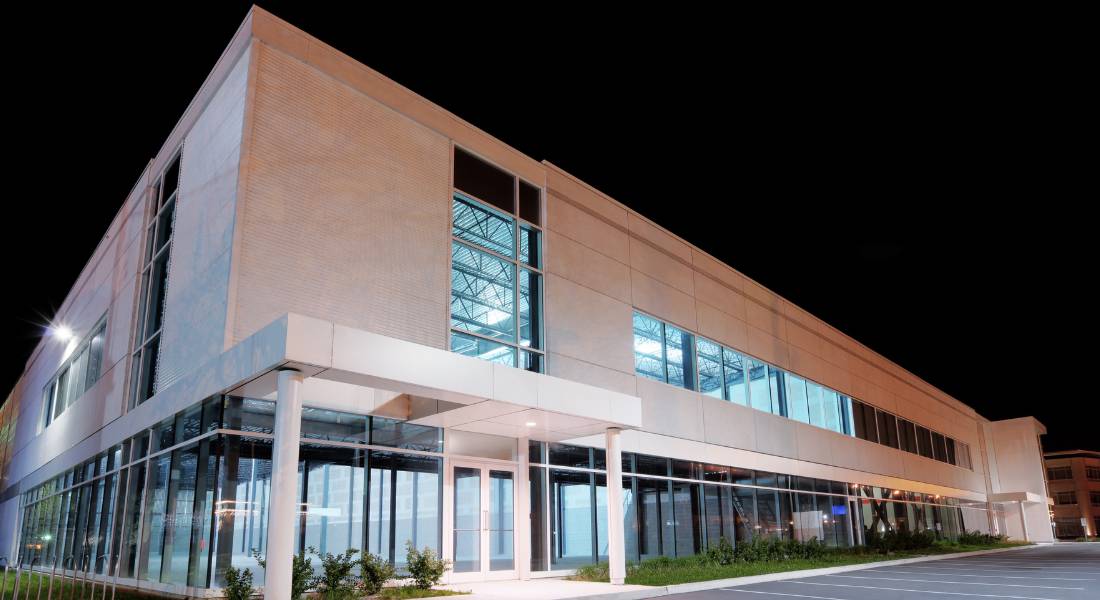
The world of commercial real estate is vast and complex. There are many different types of properties, each with their distinct characteristics. The following is a brief overview of the five different types of commercial real estate properties:
- Office Buildings
- Retail Stores
- Industrial Buildings
- Multifamily Housing
- Hospitality
1. Office Buildings
Office buildings are among the most common type of commercial real estate properties and are used for a variety of purposes. Office properties are usually high-end properties located in large cities and developed areas. Office properties, such as corporations, are typically leased out to tenants and come in various sizes and styles.
Office building properties offer many attractive features, such as high ceilings, large windows, parking lots, and other amenities. Office buildings typically contain shared workspaces, conference and meeting rooms, lobbies, and elevators. In addition to the tenants occupying the office space, there may also be retail space on the ground floor.
Office buildings typically have strict zoning requirements and provide a business-friendly environment. Potential tenants should consider the location of the office property and assess its suitability for the particular needs of their business. Further, office buildings often have public transportation options nearby for employees and tenants.
2. Retail Buildings
Retail buildings are highly diverse and can be used for various purposes. Retail establishments include hotels, grocery stores, pharmacies, and banks. Retail buildings typically occupy prime locations and offer easy access to passersby consumers.
Retail properties also tend to be well-constructed, attractive buildings featuring high ceilings, modern fixtures, and plenty of parking spaces. Many retail properties also have commercial tenants sharing space in the building. Additionally, their high visibility and reputation help attract tenants looking for high-end space.
Unlike office buildings, retail buildings usually have more flexible zoning requirements. This means that, in some cases, a tenant may be able to use the space for non-traditional uses. Retail properties can also add to a neighborhood’s aesthetic, thus increasing property values and providing a better environment for everyone.
3. Industrial Buildings
Industrial buildings are typically large-scale structures that are used for purposes such as manufacturing, research and development, warehousing, and storage. These structures can range from traditional multi-story factories to massive single-story warehouses.
Industrial buildings are often designed with heavy-duty materials that can withstand constant use. Floors are usually designed with a concrete overlay to guard against foot traffic, and the walls are generally made of durable materials that can easily be cleaned and maintained. Additionally, industrial buildings often feature high ceilings and large openings to allow for loading and unloading of materials.
As more small businesses flock to industrial buildings, some of these spaces have been designed with more flexibility and features to accommodate a variety of companies. This allows owners and tenants to customize the area to their needs while maintaining its industrial aesthetic.
4. Multifamily Buildings
Multifamily buildings are an excellent option for investors interested in rental income and long-term stability. These buildings typically comprise two or more units and feature units connected by a stairwell or an elevator.
Multifamily buildings are an excellent option for investors who want to provide housing to families, as well as those who want to rent out individual units to tenants. These buildings can range from simple duplex apartment buildings to larger complexes that may include dozens of departments.
Regarding design and construction, multifamily buildings offer plenty of options. They can feature modern designs, traditional finishes, and more. Exteriors often vary, as well, and may include materials such as brick and stone, siding, and other materials.
No matter what size or style of multifamily building you opt for, it is essential to ensure that it has the required safety codes and regulations. Additionally, be sure to enlist the help of a licensed contractor and other professionals to ensure that your structure meets all local government requirements.
5. Hospitality Buildings
Hospitality buildings are an essential type of commercial real estate property, and they are an excellent option for investors who want to provide accommodations and services to travelers.
Hotels, motels, and resorts typically fall into the hospitality-building category. These properties are often large, with multiple floors and various amenities like swimming pools, restaurants, and concierge services.
When purchasing or investing in a hospitality building, be sure to look into the current state of the local tourism industry. Hotels and other hospitality buildings depend heavily on local demand, so it’s crucial to analyze the current trends and see if investing in this type of commercial real estate property makes sense.
When constructing or renovating a hospitality building, it’s essential to be aware of local regulations related to safety and other issues. Additionally, it’s necessary to factor in how the market for hospitality properties will look. This is especially true for investors interested in long-term investments.




